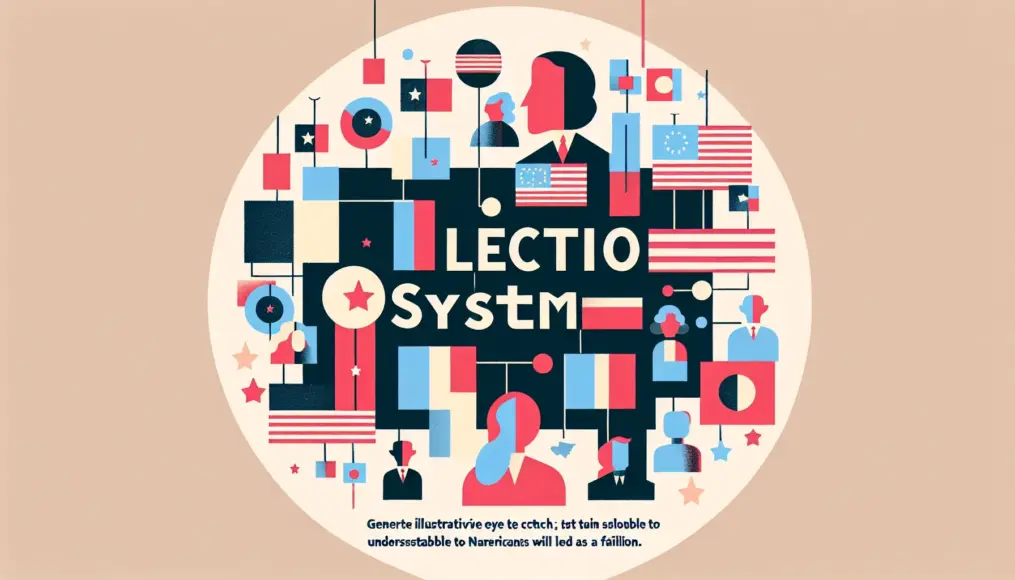Have you ever wanted to dive deeper into the election system of Japan’s House of Councillors? This body plays a crucial role in the nation’s political landscape, yet its election processes can be a bit perplexing for many. By taking a look back at history, we can shed light on its background and workings. In this article, we’ll explore the historical context of the House of Councillors election system, discuss the current electoral framework, and highlight the significance of voter participation.
Election systems are the backbone of democracy, impacting each and every one of us. Let’s reflect on the importance of voting and learn together about the House of Councillors election system as we strive for a better future.
- Exploring the historical background of the House of Councillors election system
- Understanding the current electoral structure and its implications
- Our roles and awareness as voters
The Historical Background of the House of Councillors Election System
The election system of Japan’s House of Councillors plays a crucial role in the country’s political landscape. By looking back at its history, we can uncover how this system came into being and how it has evolved over time. Notably, the establishment of the election system and subsequent reforms after World War II have had a significant impact on modern elections. In this section, we will explore the historical background of the House of Councillors election system and trace its evolution together.
The Birth of the Election System
The election system for the House of Councillors emerged alongside the spread of democracy in post-war Japan. Specifically, it was established in 1947 with the enactment of the Constitution of Japan, which created the House of Councillors as a body representing the people. Under this system, elected members were expected to engage in discussions in the National Diet and participate in the creation of laws. The introduction of this election system marked a significant step for citizens to participate in politics.
Initially, elections for the House of Councillors were held within a unicameral system, but eventually, a bicameral system was introduced, emphasizing the relationship between the House of Councillors and the House of Representatives. Thus, the election system for the House of Councillors has evolved alongside Japan’s political history.
- The House of Councillors election system was established in 1947
- It serves as a representation of the people
- The introduction of a bicameral system encouraged the evolution of the election process
Post-War Reforms
After World War II, Japan aimed to build a new political system that valued democracy. Within this context, the election system for the House of Councillors underwent several reforms, leading to its current form. Particularly during the 1950s and 1960s, there were frequent reviews of the election system, sparking extensive discussions. These efforts were geared towards enhancing transparency and fairness in elections, striving to gain the trust of the public.
As part of the reforms, the introduction of a proportional representation system was pushed forward, allowing for a wider range of opinions to be reflected in politics. In this way, the post-war reforms were a crucial process that formed the foundation of the House of Councillors election system and significantly impacted the current electoral framework.
- Revisions to the election system occurred during post-war reforms
- There was a growing demand for transparency and fairness
- The implementation of proportional representation allowed diverse opinions to be represented
Understanding the Current Structure of the House of Councillors Elections in Japan
The current system for the House of Councillors elections in Japan is built on a dual structure comprising electoral districts and proportional representation. This framework aims to ensure that a variety of opinions are reflected in politics, allowing citizens to choose representatives from a diverse array of options. Let’s take a closer look at how the election process works and the methods of voting.
The Dual Structure of Electoral Districts and Proportional Representation
The elections for the House of Councillors utilize two methods: electoral districts and proportional representation. In the electoral district system, candidates are selected from specific regions, ensuring that local voices are directly represented in the legislature. On the other hand, the proportional representation system allocates seats based on the total number of votes received nationwide. This opens up opportunities for smaller parties and new candidates to participate in the political arena.
This dual structure enhances the fairness and flexibility of the election system, contributing to a diverse range of outcomes. By allowing a variety of opinions to reach the legislature, it strengthens democracy.
- Candidates are elected from local districts
- Proportional representation expands opportunities for smaller parties
- The dual structure ensures diverse opinions are reflected
Voting Methods and Their Impact
Voting methods are also a crucial aspect of the House of Councillors elections. In Japan, in-person voting at polling stations is the norm; however, in recent years, absentee voting and mail-in ballots have become available. This development has enabled more people to express their opinions.
With a well-structured voting system, citizen participation in politics is encouraged, which is expected to influence election outcomes. Additionally, initiatives aimed at raising awareness about voting and community engagement are being promoted to increase voter turnout. Such efforts help voters feel that their opinions matter and cultivate a greater interest in politics.

If you found this article interesting, you might also enjoy reading “A Deep Dive into the Effects of Representative Democracy.” This article explores how citizens’ voices are reflected in politics and examines the advantages and disadvantages of representative democracy, offering further insights into the importance of political participation.
- In-person voting, absentee voting, and mail-in ballots are available
- Efforts to promote political participation aim to increase voter turnout
- Raising voter awareness positively impacts politics
Election Strategies of Political Parties
In the upcoming Upper House elections, each political party is crafting strategies tailored to their goals and positions. The selection of candidates and the execution of election campaigns are critical elements that can directly impact a party’s success or failure. Let’s take a closer look at how the major parties are choosing their candidates and running their campaigns.
Candidate Selection by Major Parties
During the Upper House elections, each political party employs its own criteria for selecting candidates. Generally, support within the party and relevant experience are key factors, but it’s also crucial to choose candidates who resonate with regional characteristics and voter needs. Notably, there is a trend towards bringing in younger politicians and fresh faces in order to attract new support within the community.
The selection of candidates directly reflects a party’s image and policies, which necessitates strategic decision-making. The personality, track record, and local connections of candidates often play a significant role in shaping the election outcome.
- Candidate selection based on party support and experience
- Choosing candidates that reflect regional characteristics
- Emphasis on young politicians and new faces
Running Election Campaigns
Election campaigns are essential for conveying candidates’ messages to voters. Political parties utilize various media, including television, newspapers, and the internet, to launch their campaigns. Particularly, leveraging social media has proven effective in reaching younger generations, helping to generate wider interest in the elections. By adopting these new methods, parties aim to engage a larger audience.
Additionally, local-focused campaigns are vital. Through street speeches and participation in community events, candidates can communicate directly with voters, building trust and rapport. This approach can significantly enhance the likelihood of voter turnout on election day.
- Utilizing television, newspapers, and the internet
- Importance of information dissemination through social media
- Building trust through community-focused campaigns
The Role and Awareness of Voters
In the electoral system of the House of Councillors, the role of voters is crucial. Each one of us can influence politics by expressing our opinions through voting. However, the significance of voting and the awareness behind it may not be fully understood by everyone. Here, let’s explore the importance of voting and ways to engage more people in political matters.
The Importance of Voting
Voting is a vital act that underpins democracy. Each vote we cast demonstrates our support for candidates and parties, holding the power to shape political direction. By voting, we can communicate our opinions and hopes to society, fostering a sense of participation in the political process.
Particularly in the House of Councillors elections, local voices are expected to be reflected, making it essential to pay attention to local issues. Through voting, we are called to participate with an awareness of how policies that affect our lives and future are determined.
- Voting is the foundation of democracy
- One vote can determine the political direction
- An important means of reflecting local voices
Ways to Increase Engagement
There are several ways to heighten interest in politics. First and foremost, actively gathering information about elections is essential. By engaging with news, social media, and attending political events, we can deepen our understanding of candidates and policies.
Discussing politics with friends and family is also an effective approach. By exchanging views with those close to us, we can gain diverse perspectives, leading to richer discussions. Furthermore, participating in local volunteer activities or civic movements allows us to engage with actual political action, providing opportunities to express our opinions in concrete ways.
- Gather information through news and social media
- Exchange views with friends and family
- Get involved in local activities to engage with politics
Conclusion
In this blog post, we’ve taken a deep dive into the electoral system of the House of Councillors in Japan. By exploring its historical context, current structure, and the election strategies of various political parties, as well as voter attitudes, we hope to foster a more comprehensive understanding of the topic. Most importantly, we’ve emphasized the significance of voting and the value of political participation.
Each of our voices has the potential to shape politics through the House of Councillors elections, and this is essential for building a better society. It’s crucial to keep your interest alive and express your opinions. Let’s take proactive steps as we approach the upcoming elections.
- Understanding the history and structure of the House of Councillors election system is essential
- The strategies of political parties and the role of voters influence election outcomes
- It’s important to reflect your opinions in society through voting
Remember, your opinion can make a difference in politics, so let’s prepare for the next election. We’d love to hear your thoughts and feedback, so please share your comments!


Comment